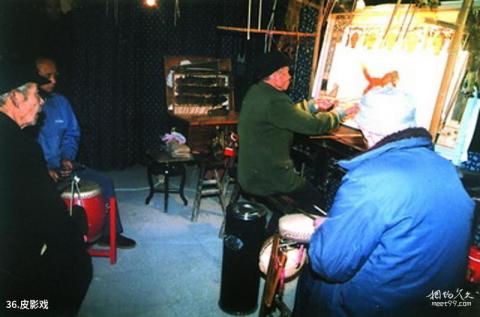
Introduction to shadow play: Shadow play, commonly known as "sheepskin play", Pinghu's shadow play was introduced from Haining. Shadow puppets are performed by artists manipulating leather figures behind the scenes, with light projected onto the curtain, and the audience watches in front of the curtain, usually consisting of 6 people. Pinghu Shadow Puppetry was founded around the 9th year of the Republic of China, including Tu Ajin in Daijia Village, Chen Renlong in Caoqiao, Yao Qiaotou, and Shengli Daxing Shadow Puppet Troupe (also known as the "Butterfly Class"). In the 36th year of the Republic of China (1947), Cao Qiao Tu Jinren founded the shadow puppet class, which continued until 1965.
The artistic characteristics of shadow puppetry include ancient tunes. Later, they were influenced by Kunqu Opera and Jiangnan Silk and Bamboo to form their own tunes. The first is high-pitched and passionate, generally used in opening operas and martial arts dramas, and is accompanied by banhu and erhu instruments; the second is high-pitched, beautiful and elegant, generally used in lyrical operas, with flute and erhu accompaniment, and the tone is long; The third is Qupai, the gongs and drums among musical instruments, special music used in specific environments. The facial makeup of the characters in the shadow play is quite distinctive, which is close to Peking Opera but different from Peking Opera. It is exaggerated and shaped according to the different personalities of loyalty, traitor, virtuous and righteousness, and the different expressions of joy, anger, sorrow and joy. In order to keep up with the development of the plot, sometimes the same character has to change his facial makeup several times.
